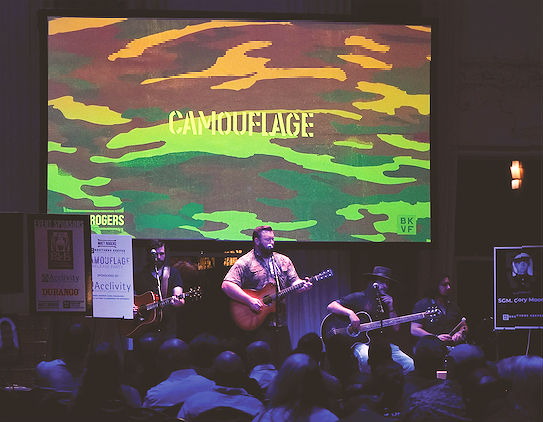Capturing Scenic Georgia Photographs
- Lakelife Magazine

- Nov 26, 2021
- 4 min read
Story & photos by Hank Segars,
published in the November/December 2021 issue of Lakelife.

Providence Canyon State Park Georgia’s “Little Grand Canyon” is heavily photographed by travel journalists. Colorful subjects and unique landscapes draw interest. If possible, try using a tripod which helps with the shakiness. Otherwise, hold steady and remember to press half-way and then slowly on the shutter-release button.
Today, digital cameras and smartphones have changed the photography game with their capabilities of shooting hundreds of images. Heavy equipment, dark rooms and film development are not needed and photo enhancement can be easily per- formed with photo editing tools on home computers and cell phones. Also, traveling the divergent regions of our scenic state provides ample photo opportunities. These photo- graphs can rekindle good memories of those backroad adventures and spur-of-the-moment excursions, especially the beautiful landscapes, captivating subjects, and unexpected surprises. With a few simple tips, improvements in photographs can provide family entertainment and tangible keepsakes of memorable travel.

Windsor Hotel in Americus I’ve covered the beautiful, turn-of-the-century hotel for Georgia Backroads and other magazines but have never tired of photographing this architectural treasure. Sunny days are ideal for taking pictures, but nice images can also be captured when the weather is cloudy, misty, or even rainy.
Let’s first think about how modern photography has changed from the old film development to the introduction of digital photography in the late 1980s. Prior to this time, photographers were hamstrung by the limitations of older cameras and film rolls that allowed for only 12, 24, or 36 exposures. And shooting a lot of film was expensive. The photographer’s skill and camera knowledge played a key role, but blurry and unusable shots might still occur. With digital photography, everything changed. Countless numbers of pictures can be taken and those bad, blurry shots are easily deleted. Additional improvements came along in the 1990s with the introduction of Adobe Photoshop, a graphics software program that allows for image adjustment, enhancement, and cropping. Free software is also available and the improved capabilities of smartphones allows for crisper images and more vivid colors.

Dog on Lake Oconee Animals are interesting subjects. Keep your camera ready for those unexpected and unplanned shots that record unforgettable adventures.
“Arguably the most profound impact of digital photography was the proliferation of picture taking and picture sharing,” writes Andy Grunberg for online Britannica. “Beginning in 2007, the year Apple introduced its first iPhone, so-called smartphones became ubiquitous, as did picture-sharing applications like Facebook, Twitter, and Instagram that enable users to upload pictures from phone to the Internet in a mat- ter of seconds.” “Now that millions around the world carry cameras in their pockets and purses, the ability to easily record events has revolutionized the culture,” notes Danny Heitman, editor at Forum magazine. Let’s look at a few travel photographs and a few simple tips that might prove helpful for your picture-taking. It’s perfectly fine to simply use automatic camera settings, which work extremely well. For example, all the shots printed in this story were taken on auto modes with a moderately-priced Canon SLR camera and older iPhone.

Taliaferro County Courthouse It is important to keep mov- ing around and photograph from different angles. Think about what appeals to you. In this scene, the tiny town of Crawfordville presented ample opportunities for taking pictures. Compelling images can be found most everywhere from big cities to the smallest and least populated of Georgia’s counties.

Ocean swim at Jekyll Island Learn about the “Rule of Thirds” in composing photographs. This simply means framing your subjects and focal points to the side rather than always in the middle. This can be done for both horizontal and vertical shots and makes any picture more interesting. Also, learn to crop and enhance your selections with post-processing programs that come with your camera or computer. It’s really not hard to do.

Early morning in historic Warm Springs Hotel Experiment with different times of day and unusual scenes This imperfect shot brings back fond memories of a stay at the Hotel Warm Springs Bed and Breakfast Inn in Meriwether County. Built in 1907, this historic hotel hosted FDR’s secret service, the national press, the King and Queen of Spain, Hollywood star Bette Davis, and other notables. This particular shot demonstrates that images don’t have to be perfect to be of interest. It’s all about what you like and what’s to be remembered.

Boating on Lake Sinclair Good lighting is important and natural sunlight is the best. When capturing portraits of people, get close- up. Try subjects in action rather than in posed positions. Frame waist-up if your subjects are in posed positions.

Antioch Baptist Church, Morgan County Think about your composition and plan your picture. Also, learn about using nature and other effects to “frame” the shot. Practice focusing to capture clear, uncluttered shots. Also, don’t be overly concerned about your equipment. Smartphones now provide high resolution and professional-grade photographs.
Lastly, it’s always a good idea to review how your camera operates and don’t get discouraged or over- whelmed with instructions about apertures, ISO, and shutter speeds. The most important thing is to take photographs that appeal to you. After all, it’s your memories that are being preserved.
Now, dust off your camera and get busy taking more pictures . . . all around Lake Country and especially when traveling scenic Georgia.







Comments